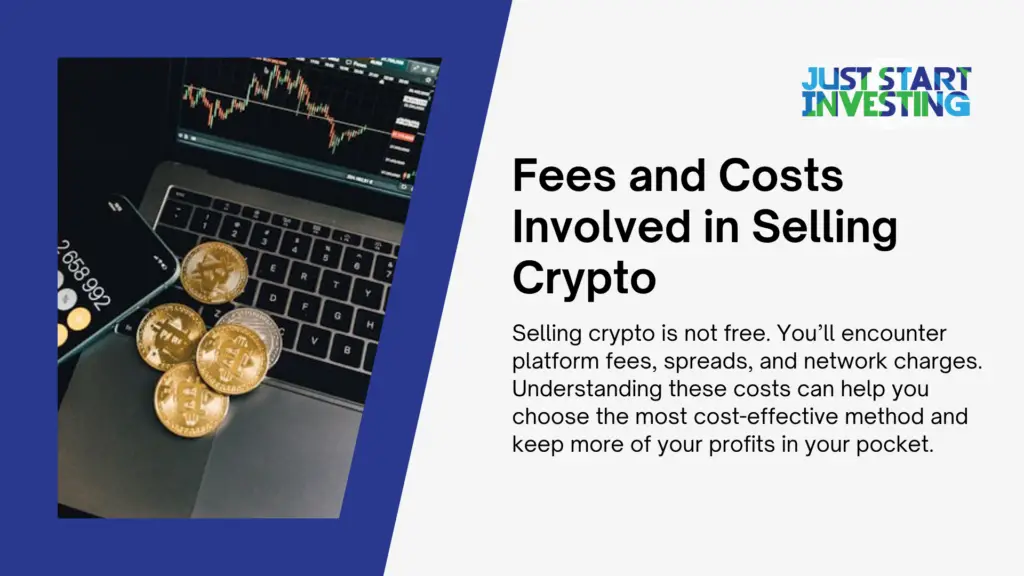Selling cryptocurrency is an important part of managing your digital assets, whether you’re redistributing your portfolio, cashing out for a profit, or switching to more secure financial instruments. There are many crucial considerations to make before acting, even though the procedure can seem simple at first. From choosing the right platform and understanding market timing to calculating potential fees and preparing for tax implications, each step plays a critical role in ensuring that you sell efficiently and securely. Some platforms offer fast and user-friendly experiences while others provide advanced tools for experienced traders, and the best choice for you depends on your goals and comfort level.
Breaking Down the Crypto Selling Process

Selling crypto means converting your digital assets into fiat currency or other cryptocurrencies, often to take profit, cut losses, or rebalance your portfolio. It might seem simple, but timing, platform rules, and market volatility can all impact how and when you should sell. Some platforms have withdrawal limits or verification steps that can delay your transaction, and the fast-moving nature of crypto markets means prices can change quickly. By understanding these core concepts, you can avoid common mistakes and make smarter, more informed decisions throughout the selling process.
What it Means to Sell Crypto
When you sell crypto, you’re converting it into another asset. Most people choose to sell for fiat currency, but you can also trade your coins for other cryptocurrencies. The act of selling is crucial for profit-taking, risk management, and portfolio balancing.
How to Know When to Sell Crypto
Knowing when to sell is one of the hardest parts of crypto investing. Smart sellers rely on data-driven strategies rather than emotion. Whether you use price charts, technical indicators, or social sentiment, having a defined plan helps avoid impulsive decisions.
Can You Sell Crypto Anytime
Cryptocurrency markets are open 24 hours a day, but that doesn’t mean you can always sell without delay. Liquidity issues, verification requirements, or high network traffic can temporarily affect your ability to cash out. Knowing these factors in advance helps prevent frustration later.
Step-by-Step Guide to Selling on Popular Platforms
Not all crypto platforms are the same. Some are great for beginners, while others offer advanced tools for seasoned traders. In this section, we break down exactly how to sell your crypto using the most popular platforms so you can find one that suits your needs.
How to Sell Crypto on Binance US
- Sign in to your account.
- Select the crypto you want to sell.
- Choose your order type: market or limit.
- Confirm the trade and withdraw your funds.
Binance US is popular for its low fees and wide selection of coins.
How to Sell Crypto on Coinbase
- Log in and click the “Buy/Sell” tab.
- Select “Sell” and your preferred coin.
- Choose a payment method and confirm.
- Withdraw your funds to your bank or PayPal account.
Coinbase is beginner-friendly but charges higher fees than other platforms.
How to Sell Crypto on Uphold
- Go to your Uphold dashboard.
- Choose your crypto and the asset you want in return.
- Review the fees and exchange rate.
- Confirm and send the funds to your bank.
Uphold allows quick swaps between crypto, fiat, and even stocks or metals.
How to Sell Crypto on PayPal
- Go to the Crypto tab in your PayPal account.
- Pick the crypto you want to sell.
- Enter the amount and confirm the sale.
- Funds appear in your PayPal balance.
PayPal is convenient, but it offers limited control and higher spreads.
How to Sell Your Crypto on Crypto.com
- Open the app and go to your wallet.
- Tap the coin you want to sell.
- Choose how you want to receive the funds.
- Confirm and complete the sale.
Crypto.com is a mobile-first option with flexible payout options and bonus rewards.
How to Convert Crypto into Cash
Selling crypto is only half the process. The next step is converting your digital assets into real-world currency you can use. This section explains different cash-out methods, including bank transfers, debit cards, peer-to-peer exchanges, and crypto ATMs.
Bank Transfer Options
Most exchanges allow fiat withdrawals to your bank via ACH, SEPA, or wire transfer. Each method varies in speed and cost. ACH is slower but usually free. Wire transfers are faster and suitable for larger amounts, but may incur a fee.
Using Crypto Debit Cards
Crypto debit cards convert your assets into fiat in real time and let you spend anywhere traditional cards are accepted. They’re great for everyday purchases but come with monthly limits and service fees, so make sure to read the fine print.
Peer-to-Peer Selling
P2P platforms allow you to sell directly to another person using your chosen payment method. You set the price and terms. This method offers flexibility, but you must use escrow services and stay alert to avoid scams.
Crypto ATMs and Local Sales
Crypto ATMs let you convert digital currency to cash in person. Local sales through trusted contacts or platforms like LocalBitcoins are another option. These methods offer privacy and speed but often come with higher fees or risks.
Fees and Costs Involved in Selling Crypto

Selling crypto is not free. You’ll encounter platform fees, spreads, and network charges. Understanding these costs can help you choose the most cost-effective method and keep more of your profits in your pocket.
Exchange Fee Comparison
Each platform has its pricing model. Binance US offers some of the lowest fees, while Coinbase tends to be more expensive. Robinhood includes its fees in the spread. Understanding how your platform charges helps you plan.
Other Costs to Consider
In addition to trading fees, you may face gas fees on networks like Ethereum, withdrawal fees when sending fiat, and currency conversion fees if you are cashing out in a different currency. These costs add up quickly and can cut into your profits if you are not careful.
How to Sell Crypto Without Paying Taxes
Selling crypto usually triggers a taxable event, but there are legal ways to minimize or avoid the tax burden. This section explores common strategies and situations where selling might not result in a tax bill.
Legal Methods for Reducing Tax Impact
You can reduce your taxable gains by offsetting them with crypto losses through a method called tax-loss harvesting. Holding your crypto for more than a year can also qualify you for lower long-term capital gains rates in many countries. Donating crypto to charity may also provide tax deductions.
Tax-Free Selling Situations
Some countries do not tax crypto after a certain holding period. In Germany, for instance, crypto held for over one year is exempt. In some regions, using retirement accounts or other tax-sheltered investment vehicles can also reduce or eliminate your tax bill. Speak with a local tax advisor for accurate information.
Pro Tips for a Smooth Selling Experience
Even experienced traders can make costly mistakes. This section provides expert tips for making your selling process as smooth as possible, from verifying your identity to avoiding common pitfalls.
Verify Your Identity Early
Most exchanges require identity verification to prevent fraud and meet regulatory requirements. Completing KYC in advance saves time and ensures you can access your funds when you need them.
Mistakes to Avoid When Selling
Avoid rushing to sell during market crashes. Always double-check wallet addresses to prevent sending funds to the wrong location. Record every transaction to prepare for tax season and avoid compliance issues later.
Sell Smart and Stay Secure
Selling crypto is more than just closing a trade. It must meet your long-term financial objectives and fit within your broader investing strategy. As you wrap up the process, make sure you stay up to date on market movements, follow the plan you set for yourself, and document every transaction. Taking a thoughtful and organized approach will help you protect your gains, reduce your risk exposure, and make tax season much easier to manage.
Keep an Eye on the Market
Markets move fast, and timing is key. Monitor news, technical indicators, and community sentiment to help guide your decisions. Selling during peak hype or early signs of a downturn can impact your results.
Know Your Exit Plan
Selling without a plan can lead to regret. Set price targets, determine when to cut losses, and decide what to do with your cash before you sell. Having a clear exit plan makes you less likely to make emotional decisions.
Document Every Sale
Keep detailed records of every transaction, including dates, amounts, platforms, and fees. Tools like CoinTracker and Koinly help automate this process and keep you ready for audits or tax filings.

Just Start Investing is a personal finance website that makes investing easy. Learn the simple strategies to start investing today, as well as ways to optimize your credit cards, banking, and budget. Just Start Investing has been featured on Business Insider, Forbes, and US News & World Report, among other major publications for its easy-to-follow writing.
